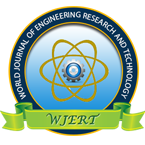| All | Since 2020 | |
| Citation | 172 | 110 |
| h-index | 7 | 5 |
| i10-index | 1 | 0 |
WJERT Citation 
Login
News & Updation
Abstract
INVESTIGATING THE VISUAL COGNITION AND DESIGN PREFERENCES FOR ORACLE BONE SCRIPT FROM A COGNITIVE LOAD PERSPECTIVE AMONG THE CHINESE STUDENTS IN MALAYSIA
*Yanning Guo, Tian Lan and Pouline Chai Lin Koh
ABSTRACT
Oracle bone script can significantly aid in learning simplified characters. However, the complexity of its design, the learners' cognitive schemas, and the connections between oracle bone script and simplified characters might increase cognitive load, potentially becoming an obstacle to learning. There is currently a lack of research in this area, particularly concerning the Chinese students in Malaysia in a multilingual environment. This study consists of two phases: in the first phase, a quantitative method was used to analyze the Chinese reading and writing ability of 50 students, identifying 12 studentsneeding improvement for the second phase of qualitative interviews. By integrating schema theory and cognitive load theory, the study delved into their visual cognition of oracle bone script and the factors influencing this cognition, further exploring their preferences for oracle bone script design styles and the reasons behind these preferences. The study found that, on the one hand, there are significant differences in the recognition and cognition of oracle bone script among participants, with various factors affecting recognition, which do not align with learners' cognitive schemas, thus increasing cognitive load. On the other hand, most participants preferred the icon oracle bone scrip design style and provided specific design suggestions. Future research could explore different design and teaching strategies, combining thoughtful design, effective teaching methods, and ongoing research to reduce cognitive load, thereby preserving and promoting the rich cultural heritage of oracle bone script.
[Full Text Article] [Download Certificate]
